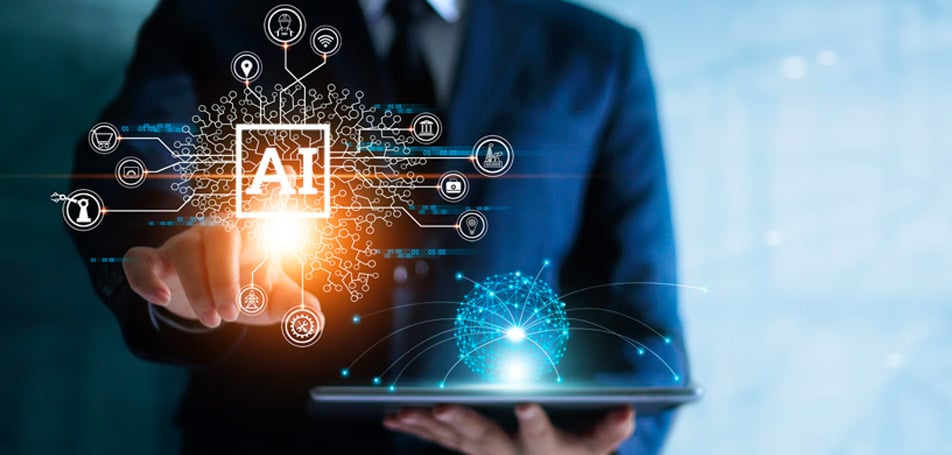
Since its founding in 1979, research and advisory company Gartner has delivered high-quality information and practical strategies to retailers around the world. Serving more than 14,000 clients in 100 different countries, the trusted company has become one of the industry experts when it comes to forecasting new trends in technology, eCommerce, consumer behaviors, and several other valuable insights for merchants.
In 2020, Gartner’s research was especially sought after as the retail industry struggled to stay afloat during the global pandemic. As eCommerce trends rapidly shifted and companies adapted to meet customers’ needs, Gartner researchers analyzed the most important trends that would define successful companies throughout 2021 and beyond.
Core Themes of 2021
At the virtual Gartner IT Symposium/Xpo in October 2020, researchers forecasted the top retail trends and recommended strategies for 2021. “As organizations journey from responding to the COVID-19 crisis to driving growth,” said Gartner’s research vice president, Brian Burke. “They must focus on the three main areas that form the themes of this year’s trends: people centricity, location independence[,] and resilient delivery.”
The top five retail trends highlighted below directly align with the key areas Burke describes. By focusing on the themes of people centricity, location independence, and resilient delivery, all types of retailers can benefit from incorporating the following ideas suggested by Gartner’s expert team.
Trend #1: Internet of Behaviors (IoB)
“The Internet of Behaviors combines technology, data analytics, and behavioral science to understand how humans use technology and how that influences future behaviors,” explains Sofia Spanou, a writer and customer success leader at ContactPigeon. In other words, the IoB encompasses the customer’s entire shopping journey to analyze past patterns, predict future outcomes, and better understand each individual’s needs.
These consumer behaviors can occur online, in-person, or a combination of different channels, as TechRadar’s Kelsie Marian points out. Marian expects that touchless or contact-free interactions will remain an expectation for consumers even once the threat of COVID-19 dissipates. “Customers should be provided with multiple ways to research, purchase and consume goods, in convenient, contact-free interactions in a hygienic physical environment,” writes Marian. Each major step of the purchasing process, from researching products to purchasing an item, should be considered by merchants to create a seamless customer journey.
Of course, there are several additional ways retailers can begin utilizing the IoB. Some other strategies or actions may include:
- Offering a variety of delivery options for customers, such as BOPIS (Buy Online, Pick-up In Store) or curbside pick-up.
- Optimizing online channels to ensure that consumers on any device can easily navigate the pages and find information quickly.
- Using facial recognition technology to ensure that people comply with face mask requirements.
Gartner admits that the adoption of the technology “does have ethical and social implications,” as the IoB aims to influence the behaviors of individuals rather than simply collect data from their shopping patterns. This brings us to the next major trend of 2021: privacy-enhancing computation.
Trend #2: Privacy Enhancements
Consumers are becoming increasingly wary of how much of their personal data is being collected by companies, and how these businesses are using this information. However, organizations have to be more than transparent about their data collection methods and uses; retailers must do everything they can to protect their customers’ privacy. Rather than resorting to standard security measures and protocols, Gartner expects organizations to upgrade to privacy-enhancing computation technologies, such as tools that can encrypt data whether it’s at rest, in motion, or in use.
Gartner researchers predict that approximately 50% of large organizations will begin using privacy-enhancing computation by 2025. As the need to share consumer information increases, along with the sensitivity of customer data, merchants and shoppers can feel reassured knowing that information will be shared and protected by three different security technologies:
- The first security measure creates a safe, trusted environment where sensitive data can be processed or analyzed.
- The second technology processes and analyzes information in a decentralized manner.
- The third technology encrypts data and algorithms to maintain privacy.
Trend #3: Total Experience (TX)
In 2020, the trending buzzword was “multiexperience,” which describes the various touchpoints, apps, and devices that need to work together to create a seamless experience for customers during their shopping journey. The basic idea behind the multiexperience, as explained by Cigniti, was to “interact with the customers at as many touch points as possible to offer a consistent customer experience across the web, mobile, app, and other modalities.”
Last year, Gartner predicted that more than 25% of all apps utilized by large enterprises will be built on or run through a multiexperience development platform by 2023. In 2021, however, Brian Burke believes that organizations need to go beyond the multiexperience and start adapting total experience (TX) strategies. Total experience is a combination of the multiexperience, customer experience, employee experience, and user experience to improve how each essential piece interacts with each segment. By linking each of these crucial experiences, businesses can operate more efficiently and cohesively, rather than each section working in its own separate silo.
The TX trend will continue to encourage the innovations and changes made during 2020, such as enabling more employees to work remotely and providing better access for virtual customers. Zain Jaffer, the CEO and founder of Zain Ventures, agrees that TX is going to be a key factor for the success of businesses around the world. Although organizations need to prioritize customer experience, Jaffer explains, business leaders can’t forget about the employees who enable their company to function on a day-to-day basis. “Total experience is an important metric that takes into consideration the experience of an [organization’s] employees and users, in addition to their clients,” says Jaffer. By ensuring that every person’s experience with your company is positive, your business is bound to flourish as a result.
Trend #4: Artificial Intelligence (AI) Engineering
Artificial intelligence (AI) can be an incredibly helpful tool for quickly organizing content, finding information, analyzing data, and performing other routine tasks. AI can handle processes that can be time-consuming and boring for people to complete on their own, giving employees more time to focus on creative work, abstract ideas, and more complex assignments. Advancements in AI engineering in recent years have been highly impressive, but the rapid growth in this industry has made many people concerned about the ethical implications of these technologies. These fears and concerns include:
- The ability for AI to make decisions without requiring human approval or intervention.
- Not knowing how an AI-enabled device will go about completing a task (for example, a self-driving car breaking the speed limit when instructed to get somewhere quickly).
- Unconscious biases from programmers and developers affecting the decision-making skills of the AI.
- Losing a sense of privacy and security in an increasingly monitored and surveilled world.
In an effort to continue using AI in more contexts, many companies have welcomed ethics boards and public transparency to keep their practices in check. Maintaining these open lines of communication is an example of ethical AI development, which a law enforcement technology provider called Axon demonstrated after creating its own ethics board. Axon highlighted three main takeaways from their experience:
- Representation. Axon took great care to select effective group members who represented a diverse range of customers and consumers. For example, since Axon’s technologies were sold to law enforcement agencies, police were the primary customers, but community members would be the consumers of the products. Axon’s ethics board considered how the technologies would help or hurt both market segments before making any further decisions.
- Transparency. Axon encouraged and enabled all members to provide honest feedback, and the company held itself to strict transparency guidelines. The organization emphasized that an uninformed or misinformed board will not be effective, and the business shouldn’t attempt to mislead any members of the board or the public. The board members should be kept updated about all relevant projects in order to give the best possible suggestions and recommendations.
- Accountability. Having an ethics board isn’t enough on its own. The company must take their recommendations into account and respond to them respectfully. If a business doesn’t take the advice of their board members, customers will not be able to view the company as committed, honest, or accountable.
Trend #5: Hyper-automation
Hyper-automation was named the #1 strategic technology trend in 2020, but this trend is expected to keep growing throughout 2021. The goal of hyper-automation is to automate every process within an organization that is capable of being automated. If all goes well, then this should free up employees to complete more advanced and creative tasks, rather than spending hours on repetitive or routine jobs. This, of course, goes hand-in-hand with AI engineering in the workplace.
ContactPigeon’s Sofia Spanou writes that “The future of retail technology is all about efficiency by automating or predicting the particular course of processes.” Automation can happen in a wide variety of contexts, from marketing campaigns to analyzing customer behaviors to processing documents and purchase orders. Since businesses should be focusing on creating an excellent TX for employees, clients, and consumers, automating more and more routine processes should enable them to improve every aspect of their organization.
If you want more information about Gartner’s top trends for 2021, you can check out their full report here. If you’d like to know how your business can start incorporating the strategies discussed in this post, don’t hesitate to reach out to a Wagento expert today!







